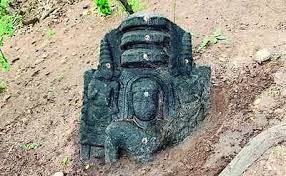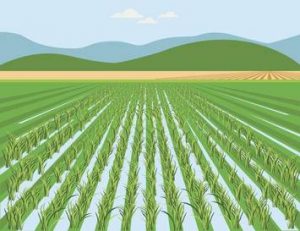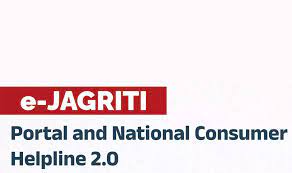Today’s Current Affairs: 17th Feb 2024 for UPSC IAS exams, State PSC exams, SSC CGL, State SSC, RRB, Railways, Banking Exam & IBPS, etc
Table of Contents
Young Scientist Programme:

The Indian Space Research Organisation (ISRO) is set to conduct its special ‘Young Scientist Programme’ or ‘YUVIKA’ for school children.
- Young Scientist Programme (YUVIKA) is a learning and awareness-creating programme of the ISRO to impart basic knowledge on Space Technology, Space Science, and Space Applications to younger students with a preference for rural areas.
- The programme is aimed at creating awareness about the emerging trends in science and technology amongst the youngsters, who are the future building blocks of our nation. ISRO has chalked out this programme to “Catch Them Young”.
- The programme is also expected to encourage more students to pursue Science, Technology, Engineering and Mathematics (STEM) based research /careers.
- Those who have finished class 8 and are currently studying in class 9 can apply for the programme.
- Three students from each state/Union Territory will participate in this programme every year, covering CBSE, ICSE, and state-board syllabus.
- The selection is based on 8th Standard academic performance and extracurricular activities.
- Students belonging to the rural area have been given special weightage in the selection criteria.
- In case there is a tie between the selected candidates, the younger candidates will be given priority.
1000-Year-Old Stone Statue Of Mahavira : Tamil Nadu

Archaeology students and professors in Tamil Nadu recently unearthed a rare 1000-year-old stone statue of Mahavira, the 24th tirthankara of Jainism.
- Lord Mahavira was the twenty-fourth and the last Tirthankara of the Jain religion.
- Mahavir was born in 599 B.C. as a prince in Bihar. At the age of 30, he left his family and royal household, gave up his worldly possessions, including clothing, and became a monk.
- He followed an extreme ascetic life, attaining kaivalya, the stage of omniscience or highest perception.
- Mahavira advocated nonviolence (ahimsa) in all circumstances and the acceptance of the mahavratas, the five “great vows” of renunciation.
- Five great vows:
- Nonviolence (Ahimsa): not to cause harm to any living beings
- Truthfulness (Satya): to speak the harmless truth only
- Non-stealing (Asteya): not to take anything not properly given
- Chastity (Brahmacharya): not to indulge in sensual pleasure
- Non-possession/Non-attachment (Aparigraha): complete detachment from people, places, and material things.
Golden-Backed Frog:

Scientists made a surprising discovery in the foothills of the Western Ghats in India — a Bonnet mushroom growing out of the side of the Golden-backed Frog.
- Golden-backed Frog is endemic to the Western Ghats of Karnataka and Kerala, specifically above the Palghat Gap, where it is known to thrive in relative abundance.
- It is about the size of a human thumb.
- These frogs prefer to reside near streams, ponds, and other water bodies, where they can lay their eggs and find their food.
- They are primarily insectivorous and feed on a range of small insects and arthropods such as ants, beetles, and crickets.
- The major threats to the survival of these frogs are habitat loss and fragmentation, pollution of water bodies, and the introduction of non-native species.
Diphtheria : Clinical Guidelines

World Health Organization (WHO) on Wednesday published the guidelines on the clinical management of diphtheria.
New recommendations of WHO:
- In patients with suspected or confirmed diphtheria, WHO recommends using macrolide antibiotics (azithromycin, erythromycin) in preference to penicillin antibiotics.
- In patients with suspected or confirmed diphtheria, WHO recommends not to perform routine sensitivity testing prior to administration of diphtheria antitoxin (DAT).
- In patients with suspected or confirmed symptomatic diphtheria, WHO suggests an escalating dosing regimen for diphtheria antitoxin (DAT) which is based on disease severity and time since symptom onset, in comparison with a fixed dose for all patients.
Diphtheria:
- It is a serious contagious bacterial infection of the nose and throat.
- It is caused by strains of bacteria called Corynebacterium diphtheriae that make a toxin.
- It can spread from person to person, usually through respiratory droplets, like from coughing or sneezing.
- People can also get sick from touching infected open sores or ulcers.
- The bacteria can also infect the skin, causing open sores or ulcers. However, diphtheria skin infections rarely result in severe disease.
- Although diphtheria can be treated with medications, in advanced stages, the bacterial infection can damage the heart, kidneys and nervous system.
- Symptoms: A thick, grey membrane covering the throat and tonsils, sore throat and hoarseness, swollen glands (enlarged lymph nodes) in the neck difficulty breathing etc
Sangam: Digital Twin Initiative

The Department of Telecommunications (DoT) has unveiled the ‘Sangam: Digital Twin’ initiative.
- Sangam: Digital Twin Initiative is a Proof of Concept (PoC) distributed in two stages to be conducted in one of the major cities of India.
- The first stage is exploratory for clarity of horizon and creative exploration to unleash potential.
- The second stage is for practical demonstration of specific use cases generating a future blueprint that may serve as a roadmap to scale and replicate successful strategies in future infrastructure projects through collaboration.
- The initiative aims to demonstrate practical implementation of innovative infrastructure planning solutions, to develop a model framework for facilitating faster and more effective collaboration and to provide a future blueprint that may serve as a roadmap to scale and replicate successful strategies in future infrastructure projects.
- Digital Twin technology offers a solution by creating virtual replicas of physical assets, allowing for real-time monitoring, simulation and analysis for experimental iterations and feedback loops to adapt to the changes to achieve the best outcomes.
- The initiative comes against the backdrop of the past decade’s breakthroughs in communication, computation and sensing in the era of techade striving for the vision 2047.
- Digital Twin symbolises a collaborative leap towards reshaping infrastructure planning and design, combining the prowess of 5G, IoT, AI, AR/VR, AI native 6G, Digital Twin and next-gen computational technologies with the collective intelligence of public entities, infrastructure planners, tech giants, startups, and academia to break the silos and engage in a whole-of-nation approach.
Minimum Support Price : Protest

Farmers from Punjab, Haryana, and Uttar Pradesh are marching towards Delhi in the ‘Delhi Chalo’ protest, demanding legal guarantees for the Minimum Support Price (MSP).
- The headline demand in the farmers’ 12-point agenda is for a law to guarantee Minimum Support Price (MSP) for all crops, and the determination of crop prices in accordance with the Dr M S Swaminathan Commission’s report.
- The Swaminathan Commission Report states that the government should raise the MSP to at least 50% more than the weighted average cost of production. It is also known as the C2+ 50% formula.
- It includes the imputed cost of capital and the rent on the land (called ‘C2’ ) to give farmers 50% returns.
- Imputed cost is used to account for the opportunity cost of using resources like land, labour, and capital.
- The imputed cost of capital accounts for the interest or returns that could have been earned if the capital invested in farming were instead invested elsewhere
Minimum Support Price:
- MSP is the guaranteed amount paid to farmers when the government buys their produce.
- MSP is based on the recommendations of the Commission for Agricultural Costs and Prices (CACP), which considers various factors such as cost of production, demand and supply, market price trends, inter-crop price parity, etc.
- CACP is an attached office of the Ministry of Agriculture and Farmers Welfare. It came into existence in January 1965.
- The Cabinet Committee on Economic Affairs (CCEA) chaired by the Prime Minister of India takes the final decision (approve) on the level of MSPs.
- The MSP is aimed at ensuring remunerative prices to growers for their produce and encouraging Crop Diversification.
- The CACP recommends MSPs for 22 mandated crops and fair and remunerative price (FRP) for sugarcane.
- The mandated crops include 14 crops of the kharif season, 6 rabi crops and 2 other commercial crops.
E-Jagriti Portal:

The Consumer Affairs Department has integrated artificial intelligence in the ‘e-Jagriti’ portal, aiming to reduce pending cases in consumer courts.
- The e-Jagriti portal, an initiative by the Department of Consumer Affairs under the Ministry of Consumer Affairs, Food, and Public Distribution, aims to streamline consumer dispute resolution.
- It integrates various consumer grievance platforms and offers features like case filing, online fee payment, and AI-powered smart search.
- The portal also includes a Virtual court facility for resolving complaints conveniently.
- National Consumer Dispute Redressal Commission (NCDRC) was established in 1988 under the Consumer Protection Act and is a quasi-judicial body with jurisdiction over complaints exceeding two crores.
- It is headquartered in New Delhi and headed by a sitting or retired Judge of the Supreme Court or a Chief Justice of a High Court.
- Appeals against NCDRC orders can be made to the Supreme Court within 30 days.
Nepal’s Terai Arc Landscape (TAL) Initiative:

Nepal’s Terai Arc Landscape (TAL) initiative earns UN recognition for ecosystem restoration, boosting hopes despite challenges like infrastructure expansion and human-wildlife conflict.
- Terai Arc Landscape (TAL) is a transboundary biodiversity hotspot launched in 2001.
- It aims to conserve critical habitats for tigers, rhinos, elephants, etc., covering ecosystems of the Terai and Churia hills.
- Spanning over 900 km from the Bagmati River (Nepal) to the Yamuna River (India), it extends across 5 million hectares and supports over seven million people.
- The Terai Arc Landscape (TAL) initiative is a pioneering landscape-level ecosystem restoration project in Nepal aimed at creating dispersal space for tigers and reversing ecosystem degradation.
- It was launched in 2004 and has restored 66,800 hectares of forest, significantly boosting the Bengal tiger population in the region.
- The initiative connects different ecologically critical protected areas in Nepal and India, fostering transboundary conservation efforts.




